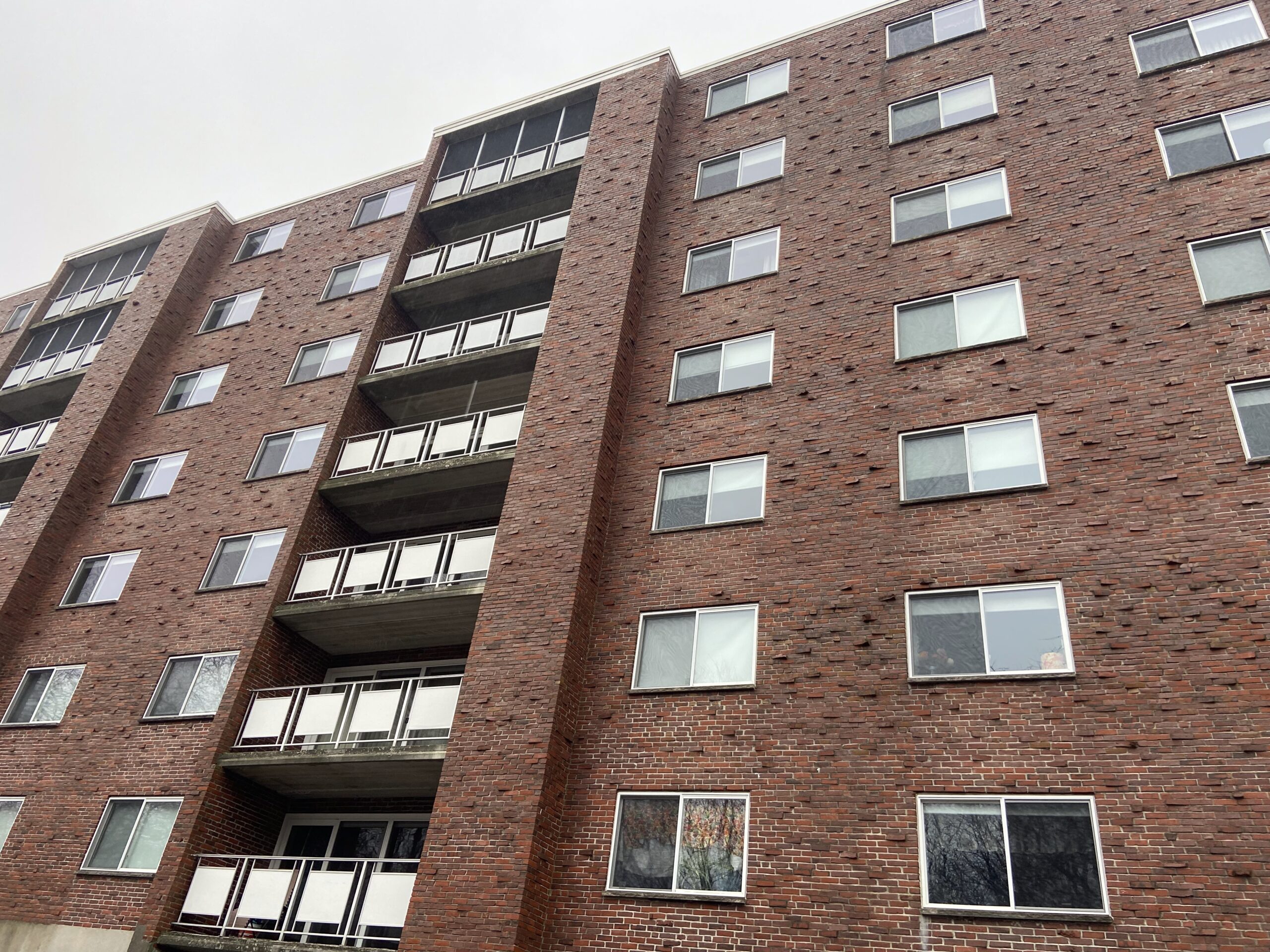Photo: Belmont’s Hill Estates will likely be added to the Brighton Street Corridor overlay district
While the Belmont Center Overlay Zoning plan has been officially shelved until the fall Special Town Meeting, the town is ready to start the second overlay project, targeting the Brighton Street/Hittinger Street Corridor. On Monday, a surprising new element was added to the district: Belmont’s most significant residential housing development.
“It seems like a no-brainer,” said Elizabeth Dionne, Select Board Chair, on including Hill Estates in the town’s plan to assist in creating a new commercial/retail/residential hub in Belmont.
With nearly 400 rental units in four multi-floor apartment blocks and several single-family townhouses, the Estates provides a unique feature to the town’s and greater Boston housing stock: affordable market rents, between $1,000 and $1,500 below comparable units in nearby Cambridge and the region.
And at Monday’s meeting, the Select Board viewed the Hill Estates as an important component of the new district. While creating the zoning overlay “needs to play itself out, I think there’s widespread support for including the Hill Estates,” said Dionne.
“I think the Hill Estates actually has a huge potential to be something really amazing,” said Board member Taylor Yates.
“Our own Arsenal Yards,” said Dionne. “The number of times I hear people say, ‘Oh, I wish Belmont would have what Arsenal Yards has’.”
And while Belmont isn’t equipped to set aside the one-million square feet to accompany the 250,000 square feet of retail, 302 apartment units, 400,000 square feet for a life sciences campus, 146 hotel rooms, and multi-level parking Arsenal Yards encompasses, Dionne said she could envision “creating a smaller version” of Watertown’s commercial Xanadu.
“I totally agree,” said Ryan.
But the public will need to wait a year before a finished plan comes before Town Meeting gets its hands on the proposal. In the view of the town’s planner, a completed zoning plan for the Brighton Street Corridor will be ready for the 2026 annual meeting, “if that is not too much of a disappointment,” said Ryan.
In Dionne’s view, simply beginning the process is “an important signal” to town taxpayers—who have repeatedly voted to increase the commercial real estate base—and potential developers. “There’s some skepticism that we actually are going to do something there,” she noted, and “we are serious about providing options and opportunities.”
As for the Belmont Center overlay, Taylor Yates said the plan is 75 percent complete, “[putting] us right on track” where the Planning Board had hoped to be. Yates marshaled support and drove the Belmont Center process as Planning Board chair until he was elected to the board in April.
But Yates acknowledged that the plan has a way to go convincing a good portion of residents of its viability to do what it hopes to do. Abutters, traffic observers, and even the president of the local business association have expressed their reservations, which put a kibosh in the already ambitious plans of the town and planning board to have the zoning changes come before the Town Meeting this month. Changes to the town’s zoning book require a two-thirds vote, which didn’t appear all that likely after a series of public meetings in February and March.
More outreach needed for Belmont Center plan
“Just because the zoning is done does not mean the public outreach piece is done … and obviously the community articulated that they would like more time for public engagement,” said Yates. Ryan forwarded the Select Board a new timeline of when the consultant will have revised plans and putting together schedules for future public meetings and outreach.
The initial goal of the Brighton Street overlay is to create a zoning district to facilitate the redevelopment of the Purecoat Plating plant and the brick buildings along Hittinger Street and the MBTA commuter rail line.
“I see no reason why the Brighton Street project can’t begin in May,” said Ryan, as it has many of the same elements used in the Belmont Center design. One possible obstacle facing the planning process is the difficulty of starting a public process during the summer when many residents are out of town.
“So maybe we can do an initial public process in late May and maybe start up again in September or October,” said Ryan.
As the discussion was winding down, Select Board Vice Chair Matt Taylor asked a question: Will the new Brighton Street Corridor zoning district include Hill Estates?
“Yes. Absolutely,” said Dionne as Ryan seconded her response. Until Monday, the Hill Estates had not been pegged as part of the corridor rezoning. Yates noted that the town has not implemented an area plan – which identifies future land uses in an overall community-wide context – for the corridor, but “as a matter of likelihood, I would at least consider [it] for inclusion.”
While a likely redevelopment scheme for the Purecoat North site is hardly a secret – the Tosi family which owns the site and the town held a public meeting last year on creating a 225-unit apartment complex – it is unknown how the Hill Estates would be linked to any Brighton Street proposal.
Despite what was said at the meeting, adding Belmont’s largest residential development into the overlay does not foretell the site’s future, which houses more than five percent of the town’s residents. The Hill Estate ownership and the town have not approached the other to discuss its future.
But Yates said it’s fairly rare in Belmont for a large number of acres to be owned by a single person, so it’s best for the town to be proactive in its zoning, letting interested developers know the direction the town wishes to take.








Leave a Review or Comment